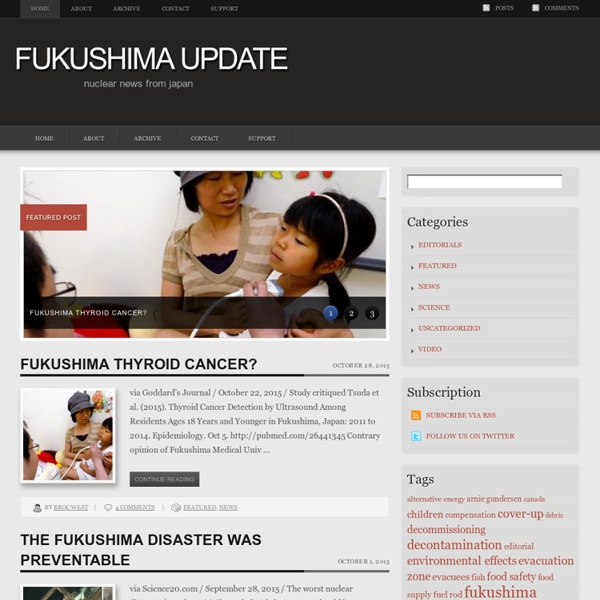



ASR ltd - Fukushima Radioactive Seawater Plume dispersal simulation We use a Lagrangian particles dispersal method to track where free floating material (fish larvae, algae, phytoplankton, zooplankton...) present in the sea water near the damaged Fukushima Daiichi nuclear power station plant could have gone since the earthquake on March 11th. THIS IS NOT A REPRESENTATION OF THE RADIOACTIVE PLUME CONCENTRATION. Since we do not know exactly how much contaminated water and at what concentration was released into the ocean, it is impossible to estimate the extent and dilution of the plume. However, field monitoring by TEPCO showed concentration of radioactive Iodine and Cesium higher than the legal limit during the next two months following the event (with a peak at more than 100 Bq/cm3 early April 2011 for I-131 as shown by the following picture). Source: TEPCO Assuming that a part of the passive biomass could have been contaminated in the area, we are trying to track where the radionuclides are spreading as it will eventually climb up the food chain.
Should future generations be forced to deal with our nuclear legacy? The first post-human structure, is what they call it. Onkalo, a vast underground storage facility 300 km northwest of Helsinki, will take Finland's most radioactive nuclear waste and quite literally lock it away forever. Once it is full, rather than covering it in warning signs the engineers behind its construction plan to remove every surface trace of the underground facility. It will be left looking no different from its surroundings - a mostly tree-laden wilderness. A forgotten site. Yet it will be designed to last indefinitely. Beyond the significance of our legacy, there is also a question about whether this is safe. 'What will human societies be doing in hundreds of thousands of years and will they be stable enough to care for this generation's toxic nuclear legacy?' At least Finland has attempted to find an answer, with Onkalo likely to be the world's first permanent nuclear waste repository when it is opened in 2020.
Dying robots and failing hope: Fukushima clean-up falters six years after tsunami | World news Barely a fifth of the way into their mission, the engineers monitoring the Scorpion’s progress conceded defeat. With a remote-controlled snip of its cable, the latest robot sent into the bowels of one of Fukushima Daiichi’s damaged reactors was cut loose, its progress stalled by lumps of fuel that overheated when the nuclear plant suffered a triple meltdown six years ago this week. As the 60cm-long Toshiba robot, equipped with a pair of cameras and sensors to gauge radiation levels was left to its fate last month, the plant’s operator, Tokyo Electric Power (Tepco), attempted to play down the failure of yet another reconnaissance mission to determine the exact location and condition of the melted fuel. Even though its mission had been aborted, the utility said, “valuable information was obtained which will help us determine the methods to eventually remove fuel debris”. The device, along with other robots, may also have been damaged by an unseen enemy: radiation.